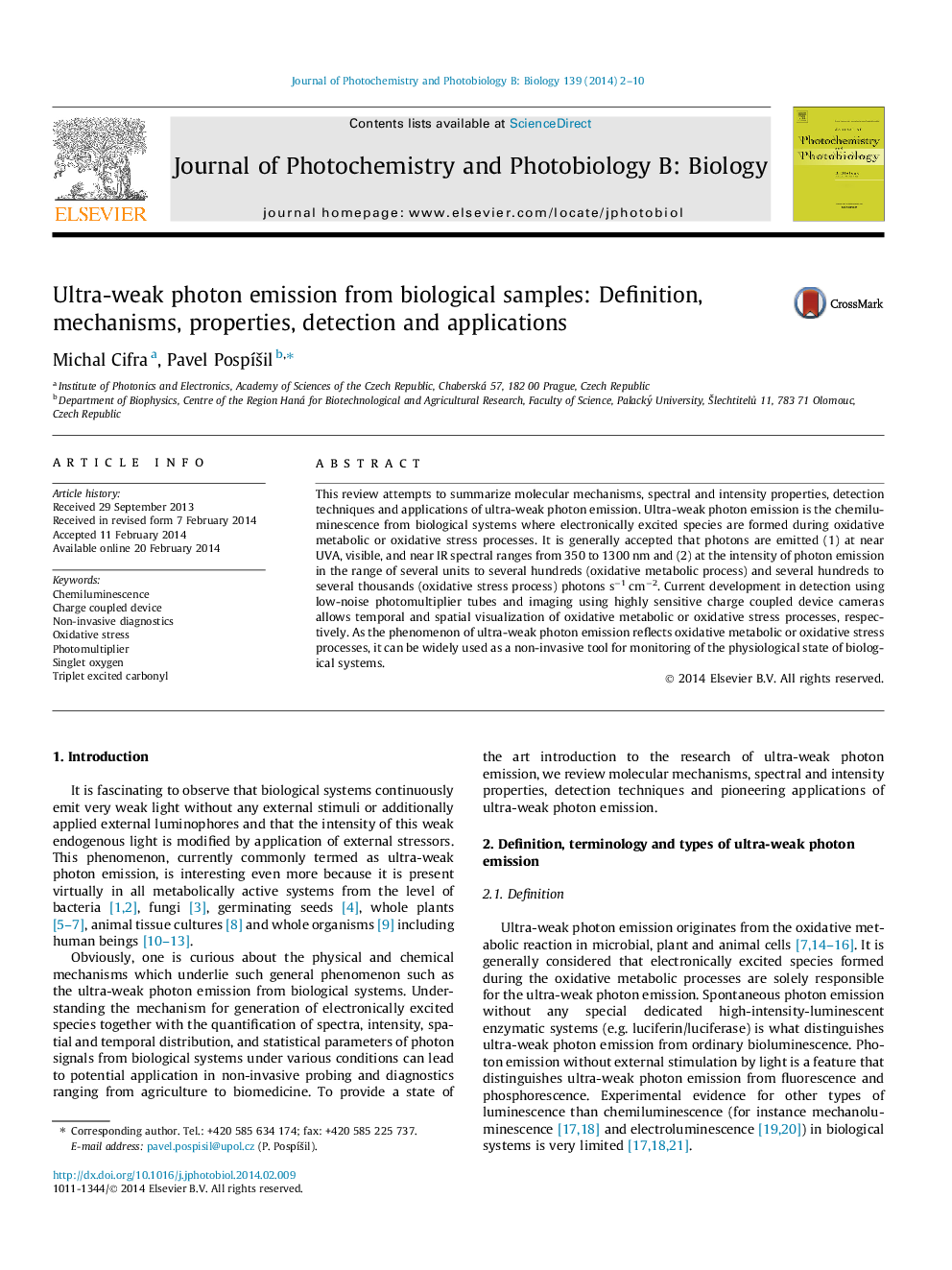| Article ID | Journal | Published Year | Pages | File Type |
|---|---|---|---|---|
| 30197 | Journal of Photochemistry and Photobiology B: Biology | 2014 | 9 Pages |
•Spectral and intensity properties of ultra-weak photon emission.•Detection techniques of ultra-weak photon emission.•Applications of ultra-weak photon emission.
This review attempts to summarize molecular mechanisms, spectral and intensity properties, detection techniques and applications of ultra-weak photon emission. Ultra-weak photon emission is the chemiluminescence from biological systems where electronically excited species are formed during oxidative metabolic or oxidative stress processes. It is generally accepted that photons are emitted (1) at near UVA, visible, and near IR spectral ranges from 350 to 1300 nm and (2) at the intensity of photon emission in the range of several units to several hundreds (oxidative metabolic process) and several hundreds to several thousands (oxidative stress process) photons s−1 cm−2. Current development in detection using low-noise photomultiplier tubes and imaging using highly sensitive charge coupled device cameras allows temporal and spatial visualization of oxidative metabolic or oxidative stress processes, respectively. As the phenomenon of ultra-weak photon emission reflects oxidative metabolic or oxidative stress processes, it can be widely used as a non-invasive tool for monitoring of the physiological state of biological systems.
Graphical abstractFigure optionsDownload full-size imageDownload as PowerPoint slide
